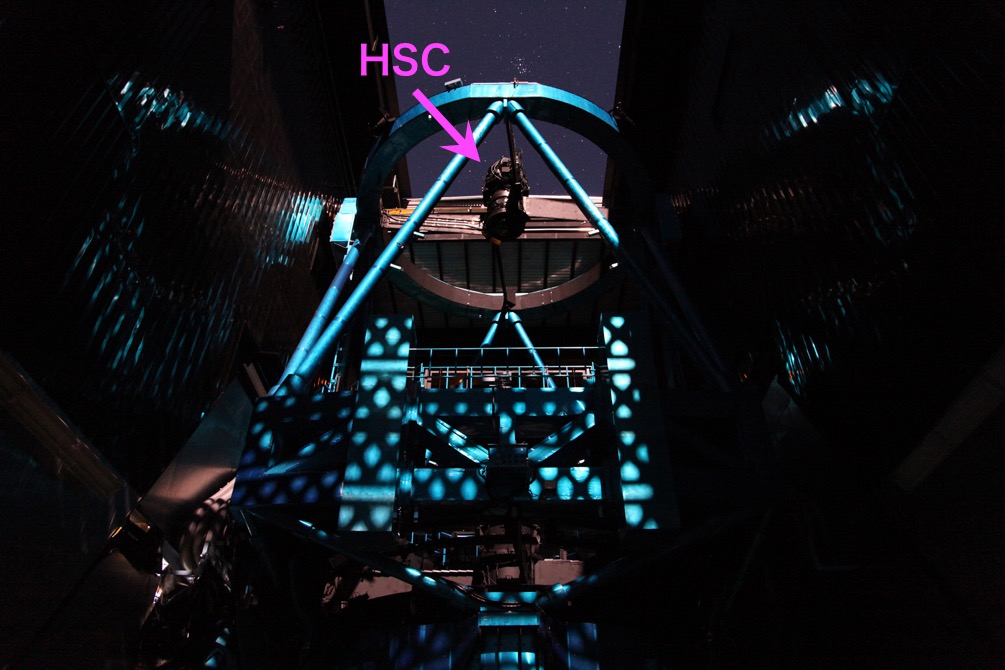
The Subaru Telescope and Hyper Suprime-Cam (HSC)
The Subaru Telescope is a Japanese optical-infrared telescope constructed near the summit of Maunakea, on the Big Island of Hawai‘i, 4,205 meters (13,796 feet) above sea level. It has a primary mirror diameter of 8.2 meters (27 feet), making it one of the largest monolithic mirrors in the world.
The Subaru Telescope has an epoch-making giant digital camera with an extremely wide field of view compared to other 8-meter class telescopes. In general, the larger the telescope, the smaller the portion of the sky it can observe at once is. In spite of the large primary mirror, the prime focus camera mounted at the top of the telescope structure can capture a wide area of the sky. The first-generation prime focus camera (Suprime-Cam) started work in 1999, just after the Subaru Telescope’s first-light, and produced many good results in discovering candidates for “the most distant galaxy” and in other research fields. The new prime focus camera called Hyper Suprime-Cam (HSC) started observations in 2013 and Suprime-Cam retired in 2017.
- Specifications of the Subaru Telescope including its Four Foci
- Hyper Suprime-Cam Website
- HSC blog (in Japanese)
- Subaru Telescope Topics "Image of M31 Heralds the Dawn of HSC's Productivity" (July 2013)
- Subaru Telescope Topics "Hyper Suprime-Cam Ushers in a New Era of Observational Astronomy" (September 2012)


Fig. 1 Photos of HSC.
(left) HSC mounted at the prime focus of the Subaru Telescope, undergoing performance testing. Another "Subaru," the Pleiades, is visible above the Subaru Telescope. (Credit: Hideaki Fujiwara/NAOJ)
(right) HSC at the prime focus of the Subaru Telescope. HSC is gigantic, it’s as tall as an adult; it weighs 3 tons; and the length of the lens barrel is 165 cm (5.4 feet). The blue top ring of the telescope can be seen around HSC. (Credit: NAOJ/HSC Project)
HSC is a world-leading digital camera with an extremely wide field of view. The specially developed 116 CCD’s have 870 million pixels, enough to successfully capture almost the entire Andromeda Galaxy in one field of view. This powerful camera enables more efficient observations.


Fig. 2 The field of view of HSC.
(left) False-color composite image of the Andromeda Galaxy (M31) captured by HSC. The g, r, i band images were taken with 10-minute exposures each. The blue, green, and red colors correspond to the g, r, and i bands, respectively. (Credit: HSC Project/NAOJ)
(right) A comparison of the images of M31 captured by Suprime-Cam (bottom left and middle) and HSC (right). The yellow-outlined boxes within HSC's image show the field of views of Suprime-Cam. For comparison, a diagram indicating the apparent diameter of the Moon is shown in the top left. (Credit: NAOJ)